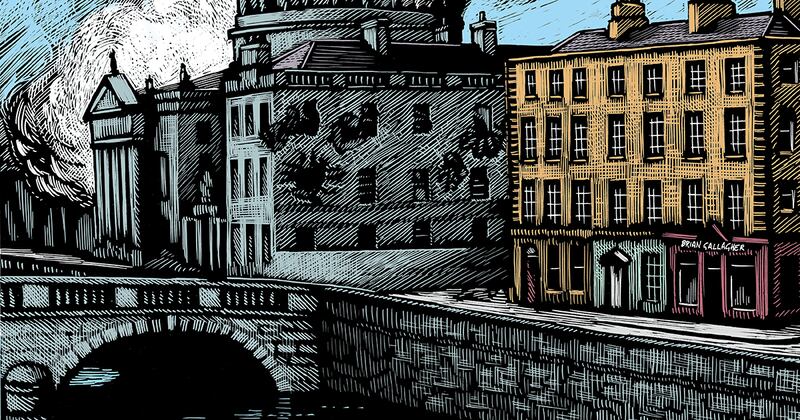On August 22nd, 1922, Michael Collins was killed in an ambush at Béal na Bláth (the Mouth of the Flowers) in Co Cork, on the road between Bandon and Macroom. The Civil War is remembered, above all else, for this tragic incident.
Many had advised Collins not to go to west Cork, which was a stronghold of anti-Treaty rebels. He commented, in that mordant wit of his, “Yerra, they’ll never shoot me in my own county”.
On August 22nd he was up and out at 6.15am, with a busy schedule ahead of him.

The convoy criss-crossed the county, passing by Béal na mBláth in the morning, where his convoy was spotted by a scout, Denis Long, and an ambush erected.
Maj Gen Emmet Dalton noted that Collins was happy among his own people. "He didn't say much as we travelled along the flat road towards Bandon. He appeared lost in the myriad thoughts of a crowded and successful day."
After tea in Bandon, the convoy headed back to Cork city via a circuitous route because so many of the roads had been blocked. As it was getting towards evening time, many of the ambushers had decided to clear off for the day, assuming Collins had gone back to Cork by a different route; a sizeable contingent of men remained, however, occupying a shaded area overlooking a continuous bend.
When the first shot was fired, Dalton ordered the drivers to “drive like hell”, but Collins insisted on engaging the ambush party.
Only casualty
Collins’s death was all the more tragic for him being the only casualty of the engagement. He was hit while running from behind an armoured car to take aim at his ambushers. Some would claim later that his actions were a result of inexperience. “If Mick had ever been in a scrap he would have learned to stay down,” Dalton said afterwards.
A mountain of speculation has produced a molehill of facts relating to the death of Collins.
The man most widely believed to have been responsible was an ex-British army veteran of the first World War. Denis "Sonny" O'Neill from Timoleague, Co Cork, had been wounded fighting with the British army in that war and joined the IRA in December 1918. Claims regarding his identity were strengthened in a 1990 documentary about Michael Collins, The Shadow of Béal na Bláth.
Art historian and performer Paddy Cullivan has, however, uncovered new evidence to suggest that Sonny O'Neill might not have been the shooter. According to Cullivan, there is no evidence he operated as a sniper either for the British army or the IRA.
Cover-up allegations
Cullivan has discovered documentation in the German archives that shows that when O’Neill was repatriated as a prisoner of war in 1918, he had a severe wound to his right arm, assessed later as constituting a 40 per cent disability.
The careless and cack-handed way in which the Provisional Government handled the killing fuelled allegations of an official cover-up. No inquiry or inquest was ever carried out and no death certificate issued. The autopsy report carried out by Dr Oliver St John Gogarty was never made public and Gogarty was strangely reticent in speaking about it.
Collins's death plunged Ireland into mourning even among the anti-Treaty side, though George Bernard Shaw wrote: "I rejoice in his memory, and will not be so disloyal to it as to snivel over his valiant death.
“So tear up your mourning and hang up your brightest colours in his honour; and let us all praise God that he did not die in a snuffy bed of a trumpery cough, weakened by age, and saddened by the disappointments that would have attended his work had he lived.”




















